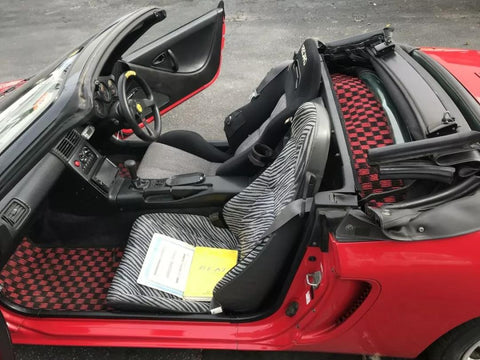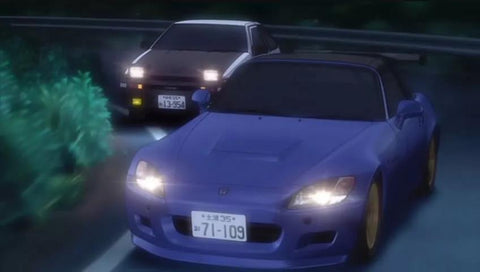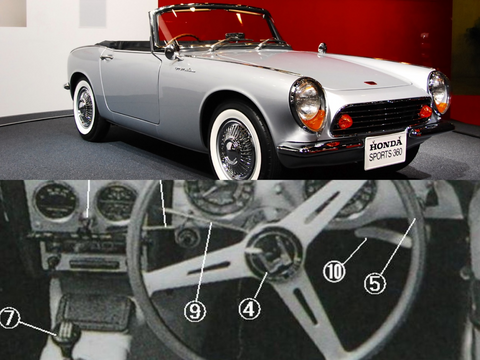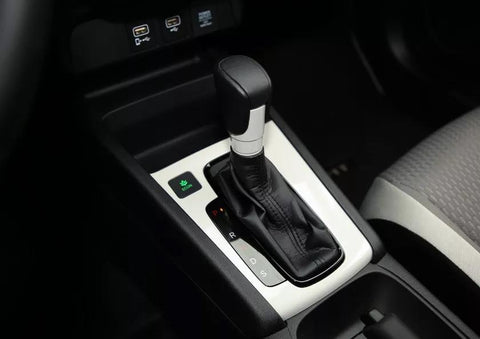Honda is about to bring back its Integra in 2022, which will also be a 6-speed manual transmission version.
The Honda Integra was marketed in North America as the Acura Integra.
It seems to be strange that Honda keeps the manual while all the other competitors all turn to automatic. We are going to dive into Honda’s history a bit more and after that you might get more understanding of its decision!
The manual gearbox is in deep dilemma. On the one hand, automatic transmission gearboxes quickly occupy the fuel vehicle market, on the other hand, the emerging pure electric vehicles do not require gearboxes. But even in this situation, Honda still always keeps a place for manual gear.
Although Honda’s manual transmission is not as well-known as it’s VTEC engine, in fact, it takes a lot of effort to build a good manual gearbox, it won’t feel any good if the shifting is jerky, or the clutch pedal is hard to step.

As early as 1962, Honda has already released a new concept sport car – Honda S360, which you may not know about, but you must have heard of the Honda S2000 that was driven by Toshiya Jojima if you have watched Initial D.

The big part of the sports genes of Honda S series are coming from the S360, this self-priming engine with a displacement of 0.356L can output 33Ps of horsepower at 9000rpm and is equipped with a 5MT gearbox. Its first appearance at the Suzuka Circuit made Honda, which was mainly engaged in motorcycles at the time, a star.

A bit later, the Honda Integra series (1985~2006) is also worth the stage. Among the Honda fans, the performance totem is Type R. and Honda's true entry into the public should be Integra Type R (DC2).
Integra Type R (DC2) is a third-generation model based on Integra launched in 1993. It changed the previous luxury technology style and began to move closer to the direction of sport. It is equipped with a close-ratio 5MT gearbox and a spiral LSD, which has excellent performance with an also extreme outstanding handling.

This 5MT gearbox also provided the technical foundation for the 5AT automatic parallel-shaft automatic gearbox that Honda was proud of later. This 5AT gearbox is unique in the world, and has the advantages of simple structure, smooth engine output torque, lower failure rate, and extremely high shift efficiency.
Of course, those cars sound a little bit far away to the generations that were born in the 80s and 90s. Our memories of the smooth driving of Honda's manual transmission probably mainly come from Honda Fit and Honda Civic.
Especially the Fit manual transmission. Compared with the CVT model with smoother power transmission, some more experienced drivers are more keen to control the shift logic and timing, coupled with the extremely easy-to-find modification accessories, making it the first choice for the grande public.

In short, Honda is one of the companies that has the potential to take the "grande public supercar" route. As an important part of a car's mechanic, manual transmission still has its unique charm. Now that Honda chose to bring out the Integral again, it is not difficult to understand that the manual transmission will be adapted in it as well.
Although Honda keeps firmly standing with manual transmission, the living space of manual gear is still undoubtedly getting narrower and narrower. The change in demand for manual transmission can be summarized into the following four stages:
1) Before the 1990s: For most people, there was no choice.
2) From the 1990s to the 2010s: cheap, fuel-efficient, and durable.
3) The last 10 years: fuel-efficient and for fun. At this time, the manual transmission has gradually lost its price advantage compared with the automatic transmission, and the reliability of the automatic transmission has been greatly improved.
4) Future: maybe only for fun. The fun of manual transmission lies in the sense of participation, even if it is not necessarily the most of the time.
Following this rule, we will understand the layout of car companies much more
In fact, just like Honda itself does not insist on manual transmission that much as well , Honda's models are more inclined to CVT gearboxes. For example, the Honda Fit has deleted the manual transmission, and now all are CVT gearboxes. Externally, according to the official statement, the previous generation manual transmission models only accounted for 3% of the total sales.

The main reason why people are unwilling to buy cars with manual transmissions is that manual transmissions have obvious weaknesses, such as not being good at climbing long slope roads, and the uncomfortable operation on crowded roads in cities.
In addition, the car-using habits of Generation Z have also changed. Most people are not very keen on mechanical control, they would rather choose having a significant increase in the demand for technological experience. Therefore, we have seen that the style of cars also adopted the card-type key and the Honda CONNECT3.0 intelligent guidance interconnection system, which is built for the sense of technology and intelligent experience.
In terms of shift efficiency, manual gear does not have an absolute advantage, especially in upper models. The 10AT on Honda Acura RDX has the same size as 6AT, and the shift speed is increased by 30% and the acceleration performance is improved. 14% (can run to 7.2s). In this performance, the Honda 6MT is not so good.

Of course, it’s not that only Honda made such a choice. This trend also exists in other brands. For example, Porsche is more keen on PDK gearboxes, and the acceleration performance of the 911 PDK gearbox version is higher than the manual gear version (3.3s VS 4s). The bizarre thing is that the Porsche 911 also has an automatic refueling function for downshifts.

In general, according to data from the Japan Automobile Sales Association, manual transmission accounted for 1.4% of all registered passenger cars in 2019, which was about 10% in 2000.
And just when we thought that the manual transmission of the tenth-generation Civic was Honda's last love for it, it was surprising that Honda turned back to it with the Integra. But when we understand the history of Honda and manual transmission models, we can also see why it’s making this approach. And after the Fit canceled the manual transmission, there are indeed fans on the Internet expressing their voices and nostalgia for the manual transmission.
Thinking of this, I was a little touched by the stubbornness of Honda. When other car companies are adding configurations, stacking lidars, and putting together chips, they are using various bells and whistles to do user operations and engage in user co-creation. Honda is still insisting on protecting a small group of car lovers. This is a true demonstration of Honda’s belief, as long as there is a demand, I will meet it.
However there's also a question left, what’s the capacity does Honda reserve for the manual transmission version under the general shortage of cores?








